I Checked Our Security Camera After Leaving My Newborn in the Care of My Sister-in-Law

It’s there, I finally see it, for the first time in my life! A grayish body far away in the sky, hidden behind the clouds, the size of 1-4 of a full moon. It won’t be there for long, the last time it was there was 33 years ago — and we’ll have to wait for 33 years more to see it again.
Tellus, the mysterious planet humankind still have so much to learn about. For a long time, Earth was the only planet quietly traveling its circular orbit around the center of our Solar System, the Sun. Our solar system was generally a pretty stable place. Jupiter, Saturn, Mars, and other planets — they all acted in a predictable way, always the same orbits. Until some time ago something unexpected happened — another planet entered the Earth’s orbit.
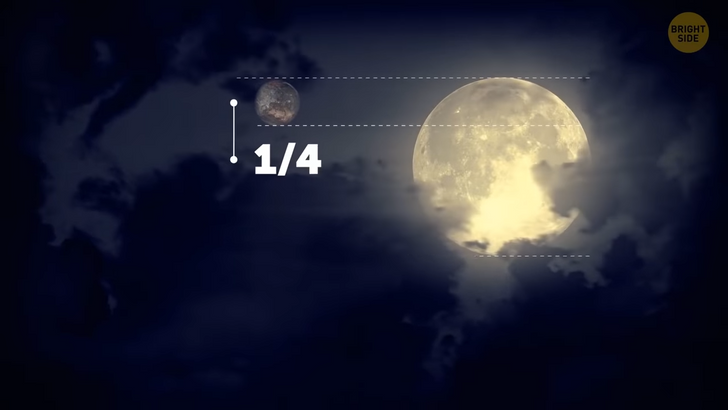
No one knows where exactly it came from since it wasn’t one of the 7 other planets from our solar system. We had advanced devices that tracked asteroids, meteorites, and other space bodies, but scientists were still terrified when they saw such a big, round body suddenly coming toward us at great speed.
First, they thought it was a huge asteroid and were afraid it would collide with us. Humankind was prepared for the worst because it was too late to deflect it.
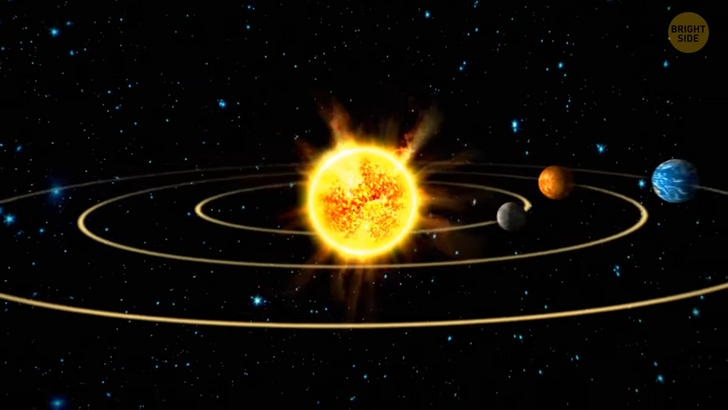
But, when the huge body came closer, to the distance of 93 million miles (150 million km), which is the average distance between the Earth and the Sun, it suddenly changed direction. We now know that’s the closest it could get to the Earth, with the size similar to our planet.
The orbiting body needs to meet three criteria to be called a planet. It needs to be a perfect sphere, orbit the Sun, and can’t orbit any other body, like another planet. It also needs to have a clear orbit of any proto-planets, planetesimals, or other planetary competitors.
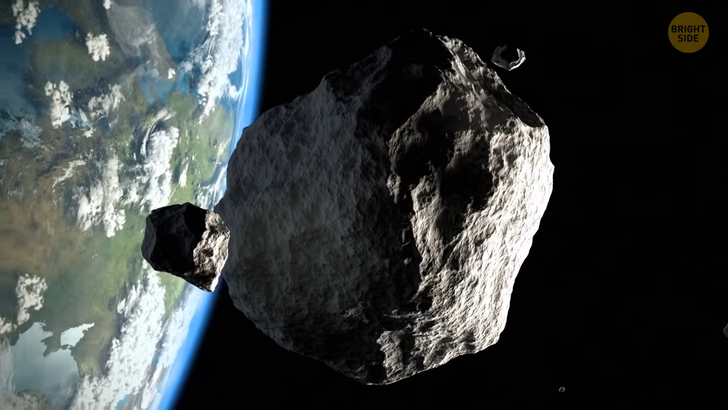
Scientists were tracking the orbit of the new planet they later named Tellus, which is a Latin word for ‘Earth’. When it entered the Earth’s orbit, it was like something happened with their gravitational forces, so these two planets created a completely new orbit, in the shape of a horseshoe. Planets could be in the same zone around the Sun in such orbit. That means they don’t move in a circle around a star, but each goes along the edge of some sort of track in the shape of a horseshoe with crescents that face each other, like two halves of a broken ring.
For example, Saturn and its two Moons [Janus and Epimetheus]. They dance around Saturn with the stable horseshoe orbit and travel around 93,000 miles [(150,000 kilometers)] from Saturn, beyond its main rings. The closest they come to each other is 9,300 miles [(15,000 km)]. Nothing occupied our media for years, but new mysterious events.
It was chaos at first because we didn’t know how things would end, no one went to school, work, college — we were all waiting for directions on what to do. People were first very afraid, but later excited when we found out that’s a planet similar to Earth, which means we could get new friends.
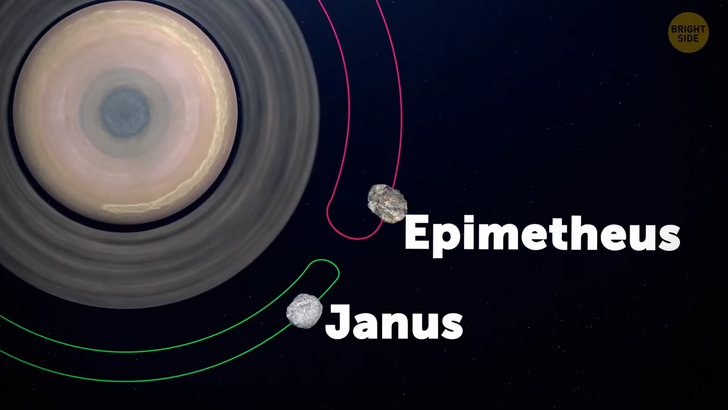
Scientists believe Tellus used to share the orbit with some other unknown planet in another solar system. We never had two planets sharing the same orbit, but some other solar systems could have it. When two planets share the orbit and get closer, one can kick another from the orbit in the unknown direction or even be pushed into the Sun because the gravitational forces of two planets interact. If two gravitations attracted each other, they could start moving towards each other and — BAM — big collision. Or they could successfully share their orbit, shaping a horseshoe orbit like path, something that happened with Earth and Tallus.
It’s not the first time it happened to the Earth. 4.5 billion years ago, when the Solar System existed only for a few tens of millions of years. There was a space object as big as Mars, moving towards our planet, and slammed into it. The theory says the Earth pulled the debris from that planet into its orbit, and those pieces eventually formed the Moon we have today. The collision probably caused resurfacing on the Earth — the oldest rocks we found on our planet are still younger than some meteorites we found.
Uranus probably also had a huge collision. Billions of years ago there was a space object, at least twice bigger than the Earth, and came very close to young Uranus, the gas giant. Two bodies collided with the force so powerful it made Uranus shift onto its side, but it “survived”, but it’s been rotating on its side different than any other planet in our solar system ever since then. The early solar system was created because gravity pulled a cloud of gas and dust together. It was a chaotic place, where debris was constantly slamming into planets that were growing and forming at that time.
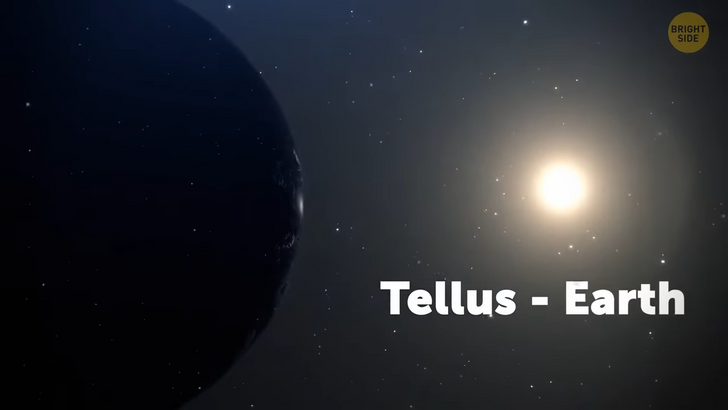
Two plants can hardly share the same exact orbit because they can’t remain stable. Quasi-stable orbit maybe, which technically means no order, everything is unstable — why we can’t be completely relaxed with Tellus, even though things look good now. It doesn’t mean the collision will happen right away — it can take billions of years before that. There are things called Lagrange points, 5 specific points [L1, L2, L3, L4, L5] where the gravitation of some planet and the Sun cancel out. If you consider the masses of just one planet and the Sun, all three bodies can move in a predictable orbit forever.
But, out of these 5 points, only two are stable. Anything that happens in the other 3 will cause trouble. Also, two of them L4 and L5 are points where asteroids collect. Gas giants have thousands of these, but our planet has only one the asteroid 3753 Cruithne, and it’s in the quasi-stable orbit with our world. It’s not going to remain stable forever, but if it was like this, two planets can share orbits.
Days are a little bit longer now, the year is also longer — we still can’t settle for the calendar because the conditions are still changing, the planets are still adjusting to the new orbit. The climate is the same for now, probably similar to one on Tellus since we’re in the same disk around the Sun.
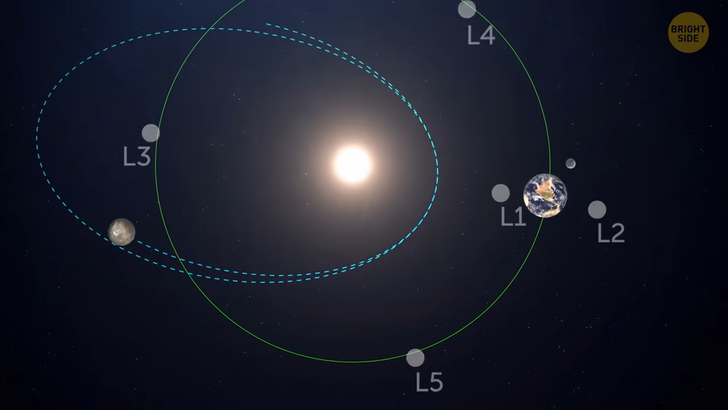
We discovered it’s pretty similar to Earth and has similar conditions which means we could maybe live there in the future. The planet comes to the closest point every 33 years, and later it’s behind the Sun, so we were slowly collecting data about conditions. We were thinking about moving there, but then something exciting happened — we started getting messages from the space for the first time!
They came by radio frequencies in some unknown language. We’re currently trying to decipher their messages and, at the same time, preparing for the first visit. We believe whoever’s out there, comes in peace. They’ve come a long way to our solar system.
Today is the day we are going to visit Tellus for the first time. In fact, the spaceships are going to be there any minute, they went there 9 days ago. Journalists are ready, people are cheering, cameras are on... We’re all waiting. Today Tellus is at the closest point, and won’t stay there for too long, maybe a couple of days, so we don’t have that much time to explore it and see who’s there.
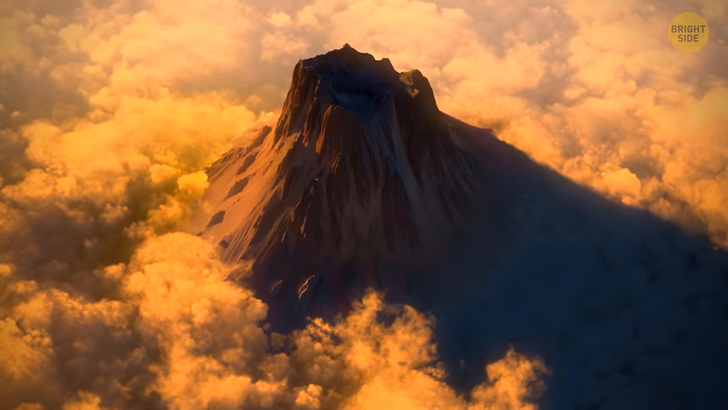
I hope we’ll be able to visit them, make new friends, collaborate, travel to see new places. Till now, we only saw some pictures scientists took from the distance. It seems they have lots of water, researchers believe many waterfalls, lakes, but much deeper and wider than ours, perhaps hiding some magnificent creatures we don’t have. They think there could be volcanoes — maybe we’ll find something bigger than Olympus Mons on Mars, which the biggest volcano we found in our solar system, on Mars, the size of Arizona, 370 miles [(600 km)] across.
Maybe it has super strong winds like Venus, whose winds are 50 times faster than its rotation. Who knows if there’s water ice, the matter that exists all over our solar system, some in shadowed craters on the Moon and Mercury. Maybe Tellus will change its size, like Mercury that has cliff-like landforms with relatively small fault scarps, so we believe it’s slowly, but constantly shrinking. Tellus perhaps has tall mountains like Pluto, which isn’t the planet but still has impressive icy mountains 11,000 feet [(3,300 m)] tall. Anyway, today’s the day when we found out. Wish us luck.











